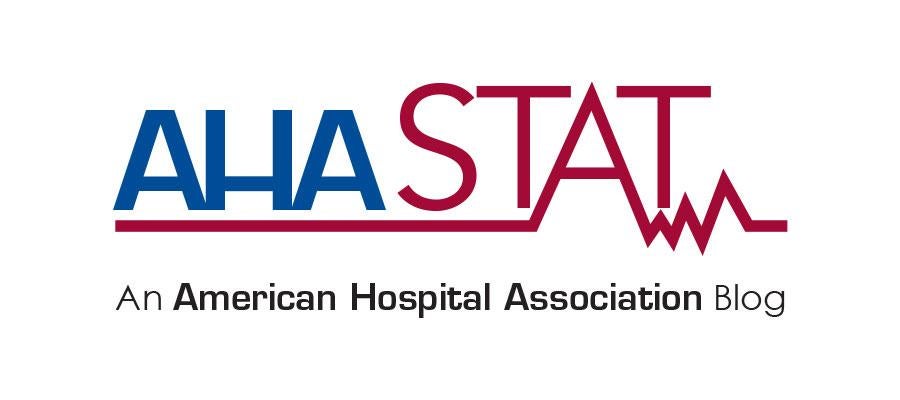New analysis finds recent RAND study misses the mark

Last month, researchers at RAND released a study that made broad claims about the prices that private insurers pay hospitals. AHA immediately pushed back that the study relied on severely limited data and lacked the level of reliability that could make it useful to inform serious policy discussions or decisions. A new analysis from Dr. Monica Noether and Benjamin Stearns,[i] economists at Charles River Associates, concurs.
The RAND study, which examined hospital prices for a limited number of employers and health plans covering 25 states in 2017, claimed that certain prices paid to hospitals by private health plans are high relative to Medicare rates and vary widely.
The analysis outlines multiple concerns with the RAND study’s methodology. Perhaps most egregious, using a “convenience sample” covering only 1 percent of hospital expenditures, the RAND authors gratuitously suggest that hospitals already struggling with pervasive government underpayments could survive, prosper and continue to offer comprehensive care with the same level of payments as the Medicare program from commercial health insurers.
“Relative to total commercial payor expenditures on hospital services in the United States, the data used by the authors are relatively sparse, and the authors have made no efforts to ensure that these data are representative,” Noether and Stearns write, noting that the “sparsity of the authors’ data is of particular importance because these data represent a convenience sample comprised of three disparate data sources, with no analysis of whether these sources are representative of the universe of commercial claims in the United States.” Noether and Stearns note that the analyzed claims represent only 1 percent of commercial hospital expenditures over the time period and only about 2 percent of the population of enrollees in employer-sponsored health plans in the U.S.
The RAND authors suggest that Medicare payment rates are an appropriate substitute for the prices negotiated between hospitals and private insurance. However, Medicare and Medicaid “covered only approximately 87 percent of hospitals’ costs of providing care to beneficiaries in 2016—that is, hospitals do not break even” on caring for Medicare and Medicaid patients, Noether and Stearns write, noting that, in 2017, the annual Medicare and Medicaid shortfall grew to $76.8 billion.
Noether and Stearns state that “[f]or hospitals to remain financially viable, these shortfalls must be covered by revenue from other sources, including commercially insured patients. This need to cover losses from government programs, which set reimbursement rates administratively rather than through negotiations, is a fundamental challenge facing community hospitals.” They note that this is supported by analysis from the government’s own Medicare Payment Advisory Commission, which shows that “hospitals have had consistently negative margins for Medicare patients, averaging a nearly 10 percent loss in 2017.” Noether and Stearns further write that, “if hospitals did receive the same rates from commercial payors as from Medicare, their average margin would be an unsustainable negative 20 percent. Not only would this amount not provide any funds to invest in the facilities, information technology infrastructure, research, and other support necessary to maintain and improve clinical quality and patient experience, but many hospitals would likely find it difficult to stay in business at all.”
Hospitals and health systems are working hard to transform care delivery to improve quality and make care more affordable for patients. They are investing in new technology and information systems to enhance safety and the patient experience and improve care coordination. That important work, and overall access to care, would be threatened by proposals like those made in RAND study. Simply shifting to prices based on artificially low Medicare payment rates would strip vital resources from already strapped communities, seriously impeding access to care. Hospitals would not have the resources needed to keep our doors open, innovate to adapt to a rapidly changing field and maintain the services communities need and expect.
A similar study from the West Health Policy Center focusing on California suffers from many of same shortcomings as the RAND study. Noether and Stearns note that, like the RAND study, the California analysis is “purely descriptive, making no attempt to explain the industry dynamics behind the observed patterns in prices.”
Despite acknowledging that California hospitals earn only a small positive operating margin of 3 percent, the authors of the West Health Policy Center study incongruously suggest that the differential between commercial payments and Medicare payments is unjustified and that hospitals could adjust without making major sacrifices in the range of services, readiness for disasters and access for vulnerable communities they currently offer.
“The authors could have used their data to provide a fuller picture of the complicated range of determinants of hospital prices and margins,” Noether and Stearns note. “For example, using the data provided by the authors, the correlation between California hospitals’ operating margins and share of hospital costs that are associated with commercial payors is only 0.03. If hospitals were truly taking advantage of market positioning, one would expect a stronger relationship between hospital profitability and the share of a hospital’s patients with commercial insurance.”
Like the RAND authors, the authors of the West Health Policy Center study too fail to calculate that differential based on actual negotiated prices, another misstep that seriously diminishes the usefulness of their findings. And, once again they fail to note that commercial Blue Cross plans are the first or second largest insurer in every single market in that state, commanding more than 60 percent in some locations, with more than enough market power to resist unjustified rates.
Melinda Reid Hatton is AHA General Counsel.
[i] The views expressed by Monica Noether and Benjamin Stearns in their analysis do not reflect or represent the views of Charles River Associates or any of the organizations with which the authors are affiliated.

